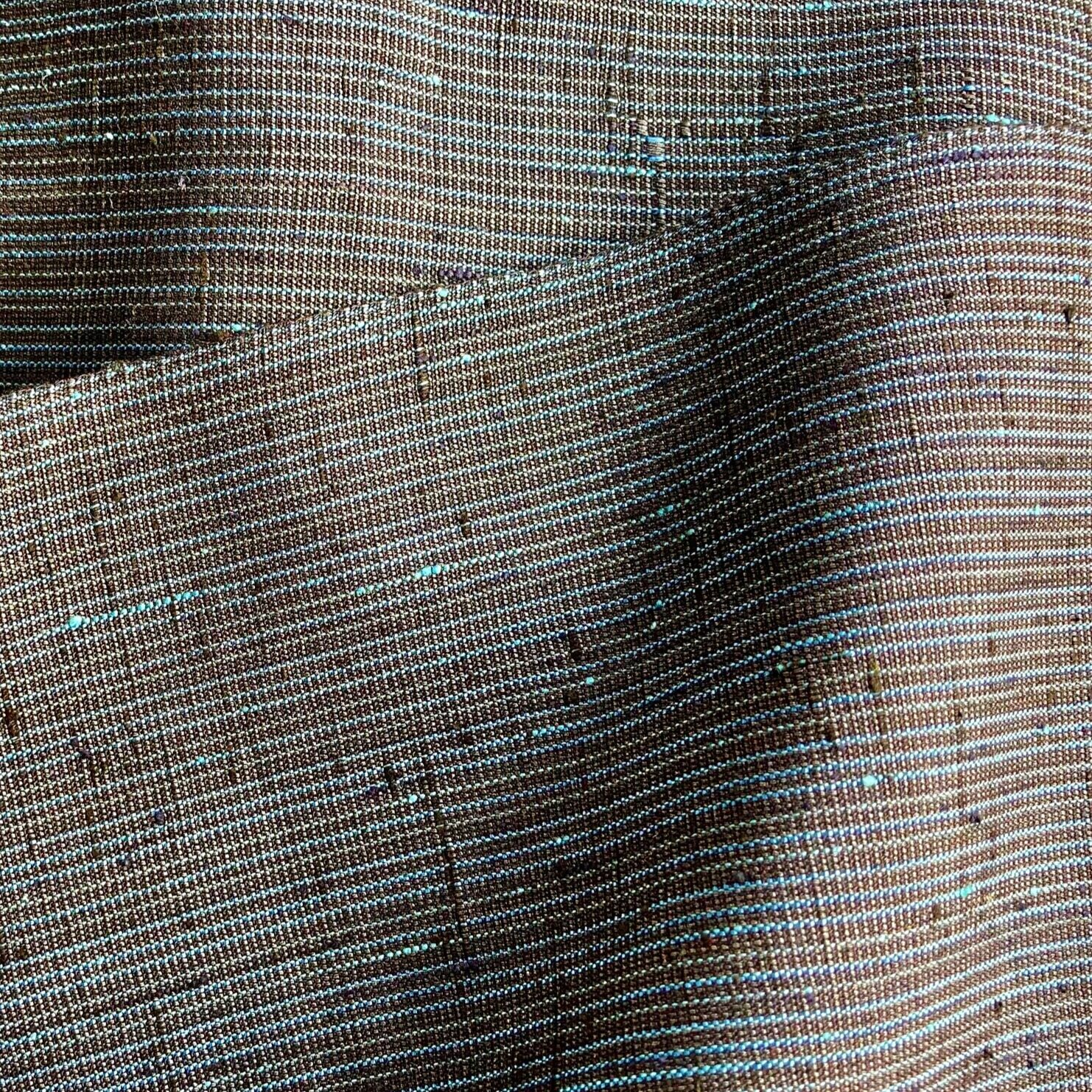TSUMUGI
Tsumugi is a rare and extraordinarily time-consuming technique of making silk fabric. After the complete threads have been removed from the silkworm cocoon, the remaining floss or broken strands are hand-spun and woven on a loom. The fabric is light and warm, both soft and stiff, and can be readily identified by its characteristic slubs and sheen.
The tsumugi technique was originally created by farmers in Japan to make daily working clothes that look like cotton. Despite its humble origins, tsumugi became increasingly popular during the Edo period, owing to the government’s prohibition of more luxurious and formal silk kimono. Today, tsumugi fabric is still regarded as casual, although it is among the most highly prized and expensive kimono.
In 2010, the tsumugi technique was designated an Intangible Cultural Property by UNESCO, the United Nations Educational, Scientific, and Cultural Organization. Tsumugi is esteemed as one of the world’s most important cultural practices and achievements.
□ Yuki Tsumugi ▫︎ Yonezawa Tsumugi
□ Shinshu Tsumugi □ Gujou Tsumugi
□ Ushikubi Tsumugi □ Nanbu Tsumugi
□ Ojiya Tsumugi □ Shiozawa Tsumugi
